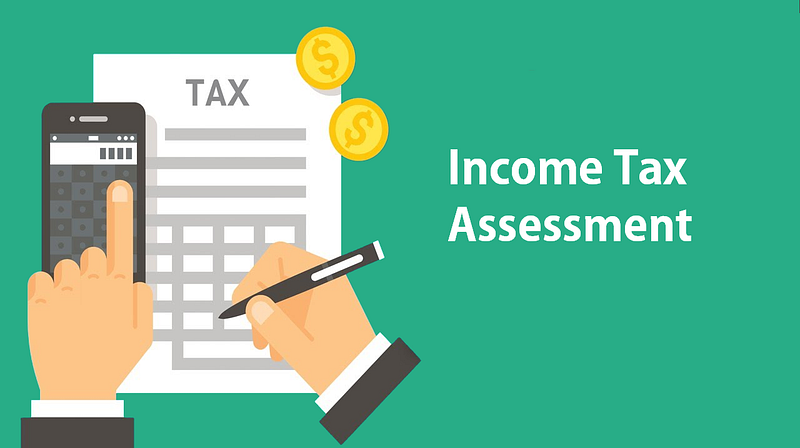
Every assessee, who earns income beyond the essential exemption limit during a fiscal year (FY), must file a press release containing details of his income, deductions, and other related information. this is often called the tax Return (ITR). Once you as a taxpayer file the income returns, the tax Department will process it. There are occasions where, supported set parameters by the Central Board of Direct Taxes (CBDT), the return of an assessee gets picked for an assessment.
The various sorts of assessment are as follows:
Self-Assessment
This type of assessment is mentioned in section 140A of tax Act,1961. In this, the assessee himself determines the tax payable. The tax department has made available various forms for filing tax return. The assessee consolidates his income from various sources and adjusts an equivalent against losses or deductions or various exemptions if any, available to him during the year. the entire income of the assessee is then received . The assessee reduces the TDS and Advance Tax from that quantity to work out the tax payable on such income. Tax, if still payable by him, is named self-assessment tax and must be paid by him before he files his return of income. This process is understood as Self-Assessment.
Summary Assessment
It is a kind of assessment administered with none human intervention. during this sort of assessment, the knowledge submitted by the assessee in his return of income is cross-checked against the knowledge that the tax department has access to. within the process, the reasonableness and correctness of the return are verified by the department. The return gets processed online, and adjustment for arithmetical errors, incorrect claims, and disallowances are automatically done. Example, credit for TDS claimed by the taxpayer is found to be above what’s available against his PAN as per department records. Making an adjustment during this regard can increase the liabilities of the taxpayer.
After making the aforementioned adjustments, if the assessee is required to pay tax, he are going to be sent an intimation under Section 143(1). The assessee must answer this intimation accordingly.
Regular/Scrutiny Assessment
This type of assessment is mentioned in section 143(3) of tax Act,1961. The tax department authorizes the Assessing Officer or tax authority, not below the rank of an tax officer, to conduct this assessment. the aim is to make sure that the assessee has neither understated his income or overstated any expense or loss or underpaid any tax.
The CBDT has set certain parameters supported which a taxpayer’s case gets picked for a scrutiny assessment.
1. If an assessee is subject to a scrutiny assessment, the Department will send a notice well beforehand . However, such notice can’t be served after the expiry of 6 months from the top of the fiscal year , during which return is filed.
2.The assessee are going to be asked to supply the books of accounts, and other evidence to validate the income he has stated in his return. After verifying all the small print available, the assessing officer passes an order either confirming the return of income filed or makes additions. This raises an tax demand, which the assessee must answer accordingly. An tax notice under Section 143(2) is issued if the tax officer wasn’t satisfied with the documents and knowledge that was submitted by the taxpayer. Taxpayers who receive notice under Section 142(2) are selected for an in depth scrutiny by the tax department and can need to submit additional information.
Best Judgement Assessment
This assessment mentioned in section 144 of tax Act,1961 gets invoked within the following scenarios:
1. If the assessee fails to reply to a notice issued by the department instructs him to supply certain information or books of accounts
2. If he/she fails to suits a Special Audit ordered by the tax authorities
3. The assessee fails to file the return within maturity or such extended deadline as allowed by the CBDT
4. The assessee fails to suits the terms as contained within the notice issued under Summary Assessment
After providing a chance to listen to the assessee’s argument, the assessing officer passes an order supported all the relevant materials and evidence available to him. this is often referred to as Best Judgement Assessment. The notice sent during this sort of assessment is Show Cause Notice, under section 144 only.
Income Escaping Assessment
This type of assessment is mentioned in section 147 of tax Act,1961. When the assessing officer has sufficient reasons to believe that any taxable income has escaped assessment, he has the authority to assess or reassess the assessee’s income. Some scenarios where reassessment gets triggered are given below.
1. The assessee has taxable income but has not yet filed his return.
2. The assessee, after filing the tax return, is found to possess either understated his income or claimed excess allowances or deductions.
3. The assessee has did not furnish reports on international transactions, where he’s required to try to to so.
For more information Click here
Source: Income Tax Assessment
No comments:
Post a Comment